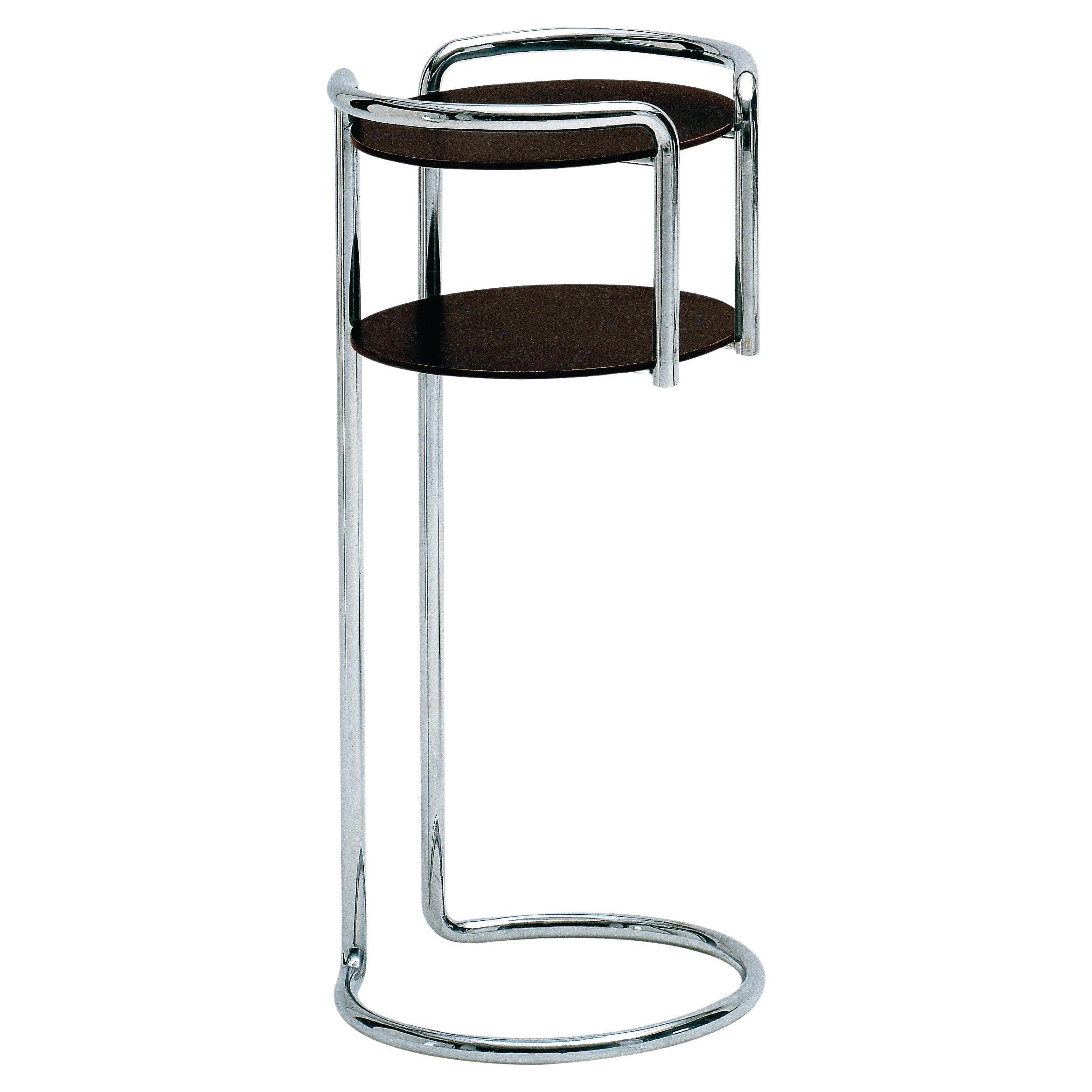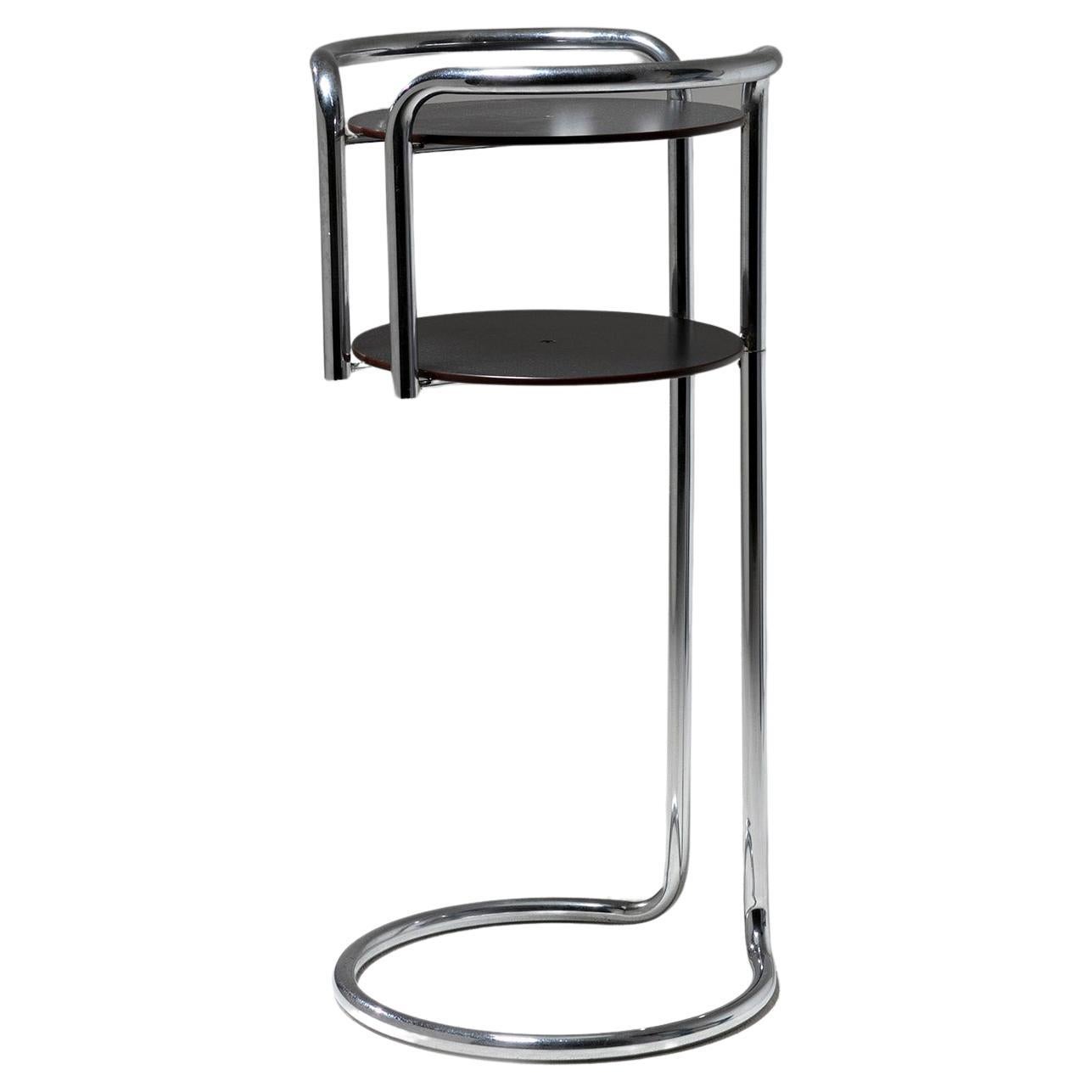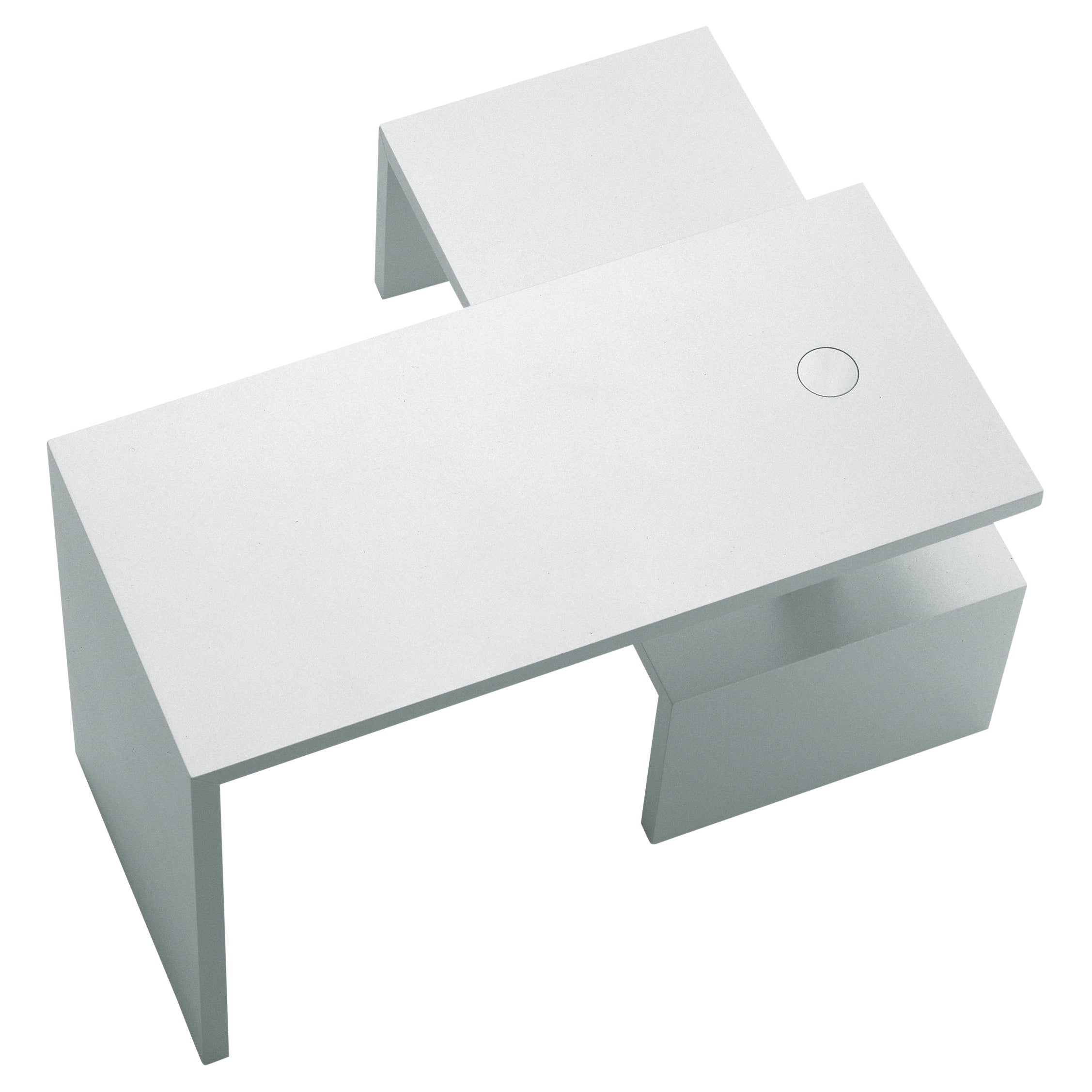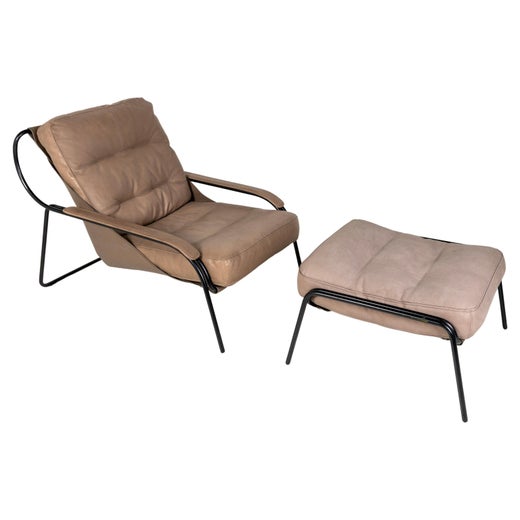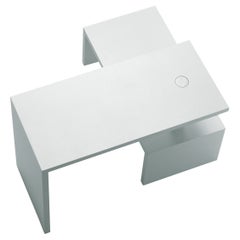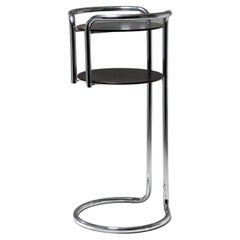Zanotta Chichibio Object Stand in Steel Frame with White Plastic Laminate
About the Item
- Creator:Zanotta (Manufacturer),Giuseppe Pagano Pogatschnig (Designer)
- Dimensions:Height: 35.44 in (90 cm)Diameter: 14.77 in (37.5 cm)
- Materials and Techniques:Plastic,Laminated
- Place of Origin:
- Period:
- Date of Manufacture:1932
- Production Type:New & Custom(Current Production)
- Estimated Production Time:7-8 weeks
- Condition:
- Seller Location:Brooklyn, NY
- Reference Number:Seller: 3401stDibs: LU1639228843152
Giuseppe Pagano Pogatschnig
An accomplished architect, exhibition designer, furniture maker and magazine editor, Giuseppe Pagano Pogatschnig helped direct Italy’s rationalist architectural movement until his death near the end of World War II. Wounded twice and captured twice in World War I, Pogatschnig left military service to work as the editor and director of Casabella architecture magazine and went on to design the V Milan Triennale and VI Milan Triennale alongside fellow Italian architect Gio Ponti.
Originally born in the Austro-Hungarian Empire, now modern-day Croatia, Pogatschnig studied Italian in Trieste before joining the Italian army to serve in the First World War. After that harrowing and traumatic experience, he became a founding member of the first Fascist Party in Parenzo. In 1924, he graduated from Turin Polytechnic with an architecture degree and began designing bridges, pavilions and buildings, including the Gualino office complex, in Turin. Nearing 1928, Pogatschnig began work on pavilions for the Turin International Exhibition.
Pogatschnig’s involvement in the V and VI Milan Triennales stand today as some of his greatest contributions to Italian architecture. He held full control over the design of the latter exhibition, in 1936, which led to the opportunity to design many of the interiors of the Italian Pavilion at the Paris Expo the following year.
Pogatschnig’s reputation as an architect and designer were overshadowed only by his outspoken nature as an editor. By 1942, he openly criticized the Italian regime and left the Fascist Party to join the resistance a year later. These activities led to his capture, imprisonment and escape from Brescia in 1944. Ultimately, Pogatschnig was recaptured, tortured and transferred across prisons to Austria’s Mauthausen concentration camp, where he died on April 22, 1945, less than a month before the end of fighting in Europe.
On 1stDibs, find vintage Giuseppe Pagano Pogatschnig seating, tables, and case pieces.
Zanotta
Entrepreneur Aurelio Zanotta founded Zanotta in 1954 in Nova Milanese, Italy. Originally called Zanotta Poltrona, it specialized in traditional furniture. By the early 1960s, however, Zanotta had established a reputation for edgy mid-century modern design. Today’s vintage furniture collectors know the brand well for its innovative and wholly sculptural chairs, coffee tables and more.
One of Zanotta’s earliest successes was the Mezzadro stool — better known as the Tractor stool — designed by Pier Giacomo Castiglioni and his brother Achille in the late 1950s. In 1965, Zanotta was among the first furniture companies to work with expanded polyurethane foam and frameless construction, such as for the Throw-Away sofas and armchairs designed by Willie Landels. Another popular design was the Blow chair — designed by Jonathan De Pas, Donato D’Urbino, Paolo Lomazzi and Carla Scolari — viewed by many as a physical expression of late '60s carefree culture.
In 1969, amid the provocative movement we now call Italian Radical Design, Zanotta’s Sacco chair garnered major attention. The boundary-pushing beanbag chair was the brainchild of designers Piero Gatti, Cesare Paolini and Franco Teodoro who presented it to Aurelio Zanotta as a transparent vinyl sack loosely filled with small polystyrene balls. He suggested its signature brightly colored leather.
The Sacco chair won the 1970 ADI Design Museum’s Compasso d’Oro award. In 1972, the Museum of Modern Art in New York included it in the landmark exhibition “Italy: The New Domestic Landscape” curated by designer Emilio Ambasz. In 2020, it received a Compasso d’Oro ADI Lifetime Achievement Award for 50 years of enduring popularity. It is now in museum collections around the world including the Triennale Design Museum of Milan, the Musée des Arts Décoratifs in Paris, and London’s Victoria & Albert Museum.
After Aurelio Zanotta died in 1991, the company remained in his family and has been run by his three children since 2002. Zanotta continues to set the bar high for furniture design with trend-setting pieces.
On 1stDibs, find a collection of vintage Zanotta seating, tables and other furniture.
- ShippingRetrieving quote...Shipping from: Nova Milanese, Italy
- Return Policy
More From This Seller
View All21st Century and Contemporary Italian More Asian Art, Objects and Furniture
Plastic
21st Century and Contemporary Italian Tables
Steel
21st Century and Contemporary Italian Tables
Steel
21st Century and Contemporary Italian Table Lamps
Metal
21st Century and Contemporary Italian Coat Racks and Stands
Aluminum
21st Century and Contemporary Italian Tables
Steel
You May Also Like
2010s Italian Magazine Racks and Stands
Steel
Vintage 1930s Italian Pedestals
Metal
1990s Italian Modern Umbrella Stands
Chrome, Iron
21st Century and Contemporary Great Britain (UK) Modern Umbrella Stands
Steel
21st Century and Contemporary Italian Umbrella Stands
Stainless Steel
21st Century and Contemporary Italian Umbrella Stands
Stainless Steel
